
To Climb the Income Ladder, It Helps to Have a Network
JFF Vice President Michael Collins shares his personal story to highlight how our Postsecondary State Network helps people at the bottom of the income ladder climb up.
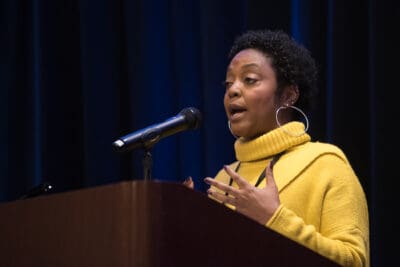
February 21, 2019
At a meeting of JFF’s Postsecondary State Network, community colleges leaders get a call to be the change agents for achieving equity. The charge: Look for new ways to use data, ask different questions, and identify new solutions.
JFF’s Postsecondary State Network Meetings bring together leaders, policymakers, and practitioners committed to improving postsecondary outcomes and economic mobility. At the most recent meeting in Austin, Texas, JFF Senior Director Lucretia Murphy kicked off the second day of the meeting with a powerful and inspiring message about the important role that community college leaders play in creating a more just and equitable future. Here are highlights from her presentation.
It’s my pleasure to be joining the postsecondary team and this amazing network today. I’m going to start with JFF CEO Maria Flynn’s challenge to frame our conversation.
Maria identified three imperatives facing community colleges: the imperatives of the market— that is, our field—our institutional responses to that market, and the role of leaders in that response.
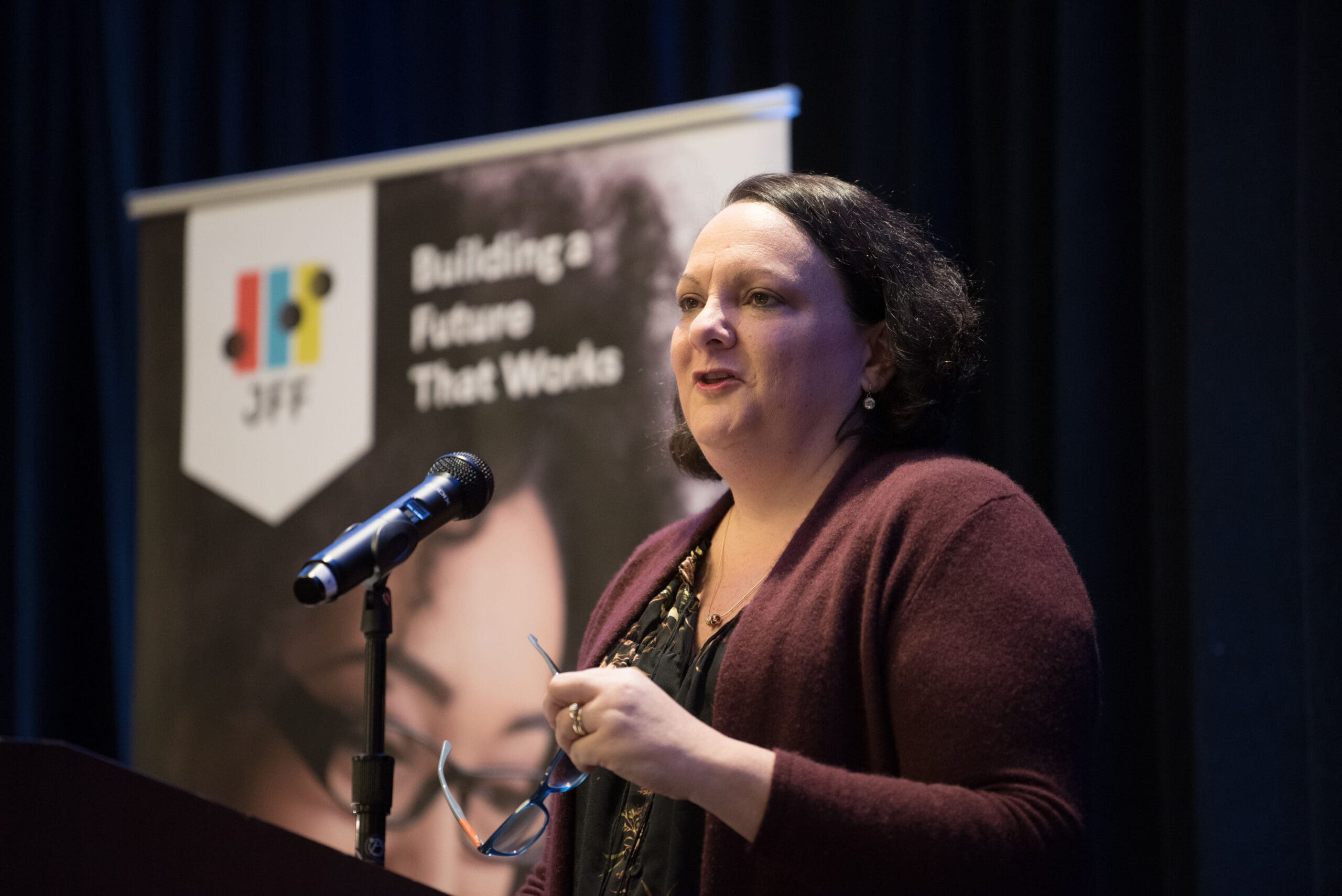
With the market, we know there’s an urgency of equity, and certainly that’s reflected in the data that we’ve seen from researchers at the Education Trust and from Opportunity Insight’s research on economic mobility. From your own individual and institutional experiences, you know that that market urgency is bearing out. We see the landscape of employment changing, with the twin towers of automation and artificial intelligence upon us. In that landscape are new actors —new organizations and companies—that are responding to market challenges. With these new actors comes the question: are they responding through an equity and quality lens?
In responseto all of these market imperatives, what is our institutionalresponse? Maria issued a challenge: to be change agents. Be bold andtransformative. Be agents of innovation. Take that innovation to scale. We knowsmall innovations can scale—thousands of kids, for example, enrolled in Early College High Schools, which started out as acrazy pipe dream.
We have to be bold about setting, tracking, and accelerating equity goals—aboutfinding new ways to use data, asking different questions, and identifying newsolutions. This is how we reach the third imperative of bold leadership. We’re notjust objects of change; we’re not afraid of the challenges that are coming, butrather we find ways to leverage the changes that are coming in our direction,like automation and artificial intelligence, to advance opportunities.
You are the launchpad for the equity that we're looking to see.
The Postsecondary State Network is positioned to be bold and transformationalin its leadership and its response to market challenges. We can fight fire withfire. Make automation and artificial intelligence lenses through which weaccelerate our work and expand the capacity of our institutions. If what’sgoing to set us apart from the robots is being human, how can communitycolleges cultivate human talents? How do we learn how to learn? How do wecurate creativity? Creativity in the way we solve problems, in the way we thinkabout solutions, in the way we resolve conflict. All of this is within thecommunity college wheelhouse.
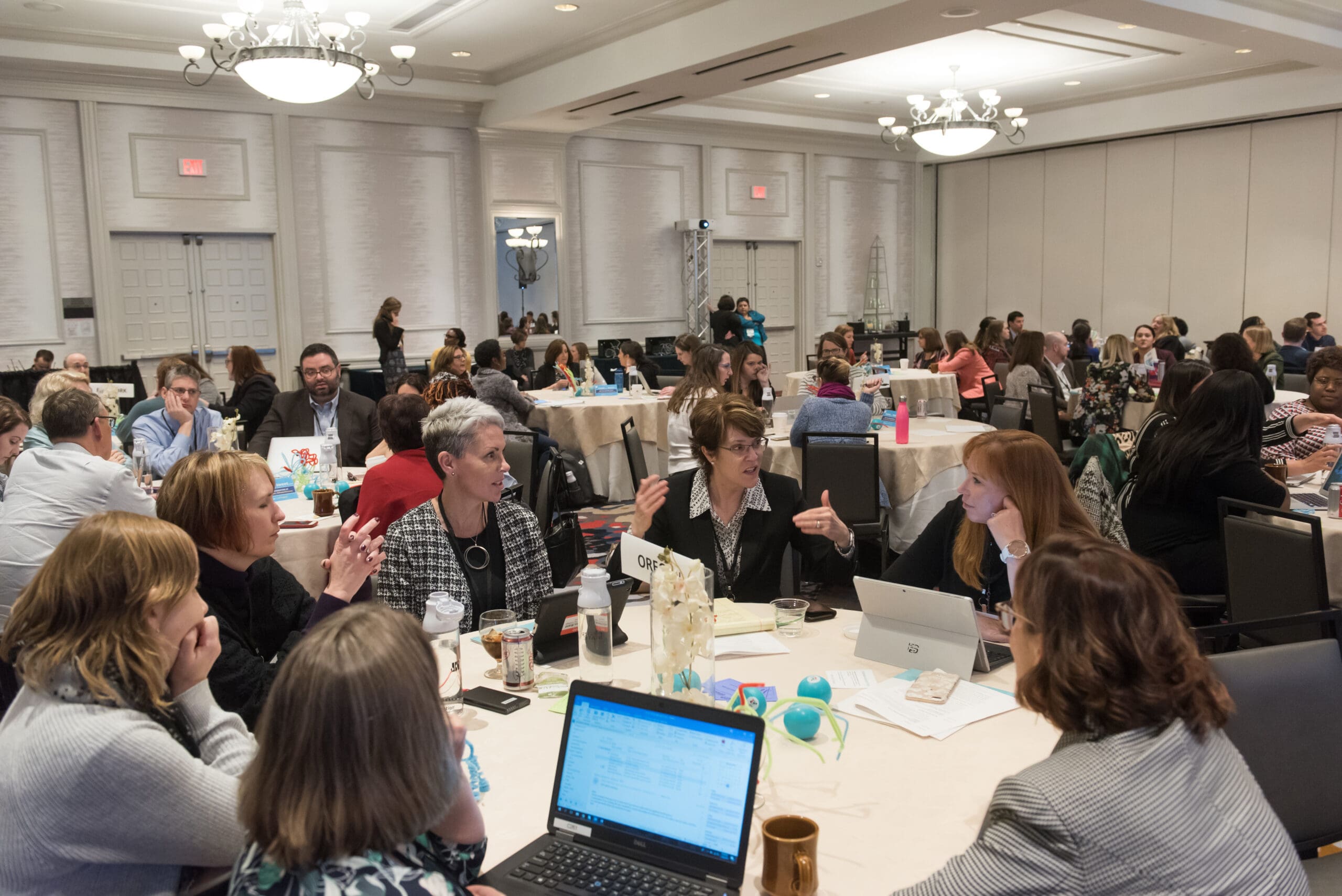
The charge is: how can all of us—JFF and the Postsecondary State Network—create bold, emboldened change agents of the people who come to your institutions—the ones who always see themselves on the wrong side of the data? How can we encourage these students to also be change agents—to change their lives and their futures? How can you be the places to tell them that they are, in fact, the change agents they need to see? How do we create a future where automation, artificial intelligence, and economic mobility are equal partners in the American dream that everybody experiences?
That means making sure that it’s not just some kids who make it into a labor market that they can thrive in. We need to make sure the entire state system is constructed to challenge the economic immobility poor children face. That the entire adult workforce ecosystem, community colleges, community-based organizations, public and private agencies, and philanthropic agencies, are invested in and committed to ensuring education and employment opportunity that disrupts barriers of inequity for our currently untapped workforce—the people who are constantly working and never getting ahead.
In my life, I’ve been used to seeing black people on the wrong side of the data equation, both in education and employment. I was an attorney for a while, so I also know about the number of black people who are attorneys and the number of black women who are attorneys. The gaps, the gaps, the gaps. It’s been implied that part of that disadvantage is because people of color are in the minority. And there’s both celebration and trepidation that people of color will soon be in the majority. There won’t be a single ethnic or racial majority, and this might change things.
My son is living in that. In his precious little elementary school, a public school, half a mile from his house, it’s 65 percent kids of color. They love each other, they hate each other, they fight together, they make up together. It’s like The Lord of the Flies, running around, speaking different languages. They’re all different colors, and no one at that school thinks twice about it. The principal said the other day, “These are all our children.”
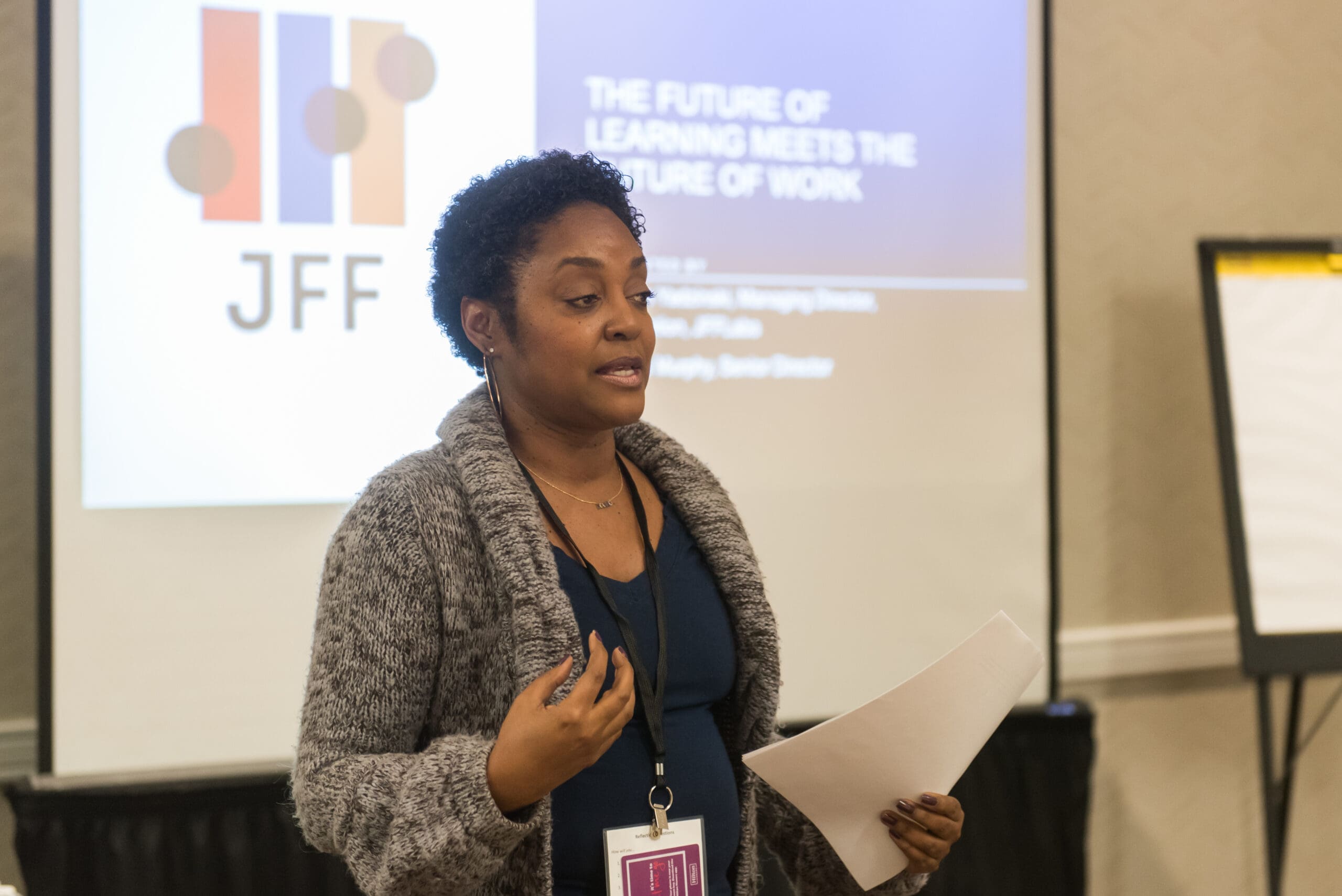
But it doesn’t happen that we will see economic mobility change, just because the numbers of people of color are growing. The numbers we’ve seen about equity gaps can stay the same. Then, instead of the American dream, we’re living an American nightmare. The majority of people of color in the United States will continue to be the minority of people holding access to power. The minority, white people in America, will continue to hold the majority of resources and access to power. Instead of us looking like Sweden, where there’s high economic mobility, it will look much more like South African apartheid.
But this is where communitycolleges rise up! This is where community colleges rise up in this nightmare,because who do you serve? You serve the majority. They will come to you. Youare the launchpad for the equity that we’re looking to see.
John Friedman of Opportunity Insights had a slide showing how communitycolleges are the inflection point for equity in outcomes. Then he showed theslide that said, “What if?” What if we actually gave the same amount ofproportional support and representation to people of color and white women tothink about themselves as innovators and patent holders? What if we coupledthat with the slide on test scores, and we increase the number of people ofcolor and white women who were on the high achievement side of the graph? Thatis in the hands of community colleges.
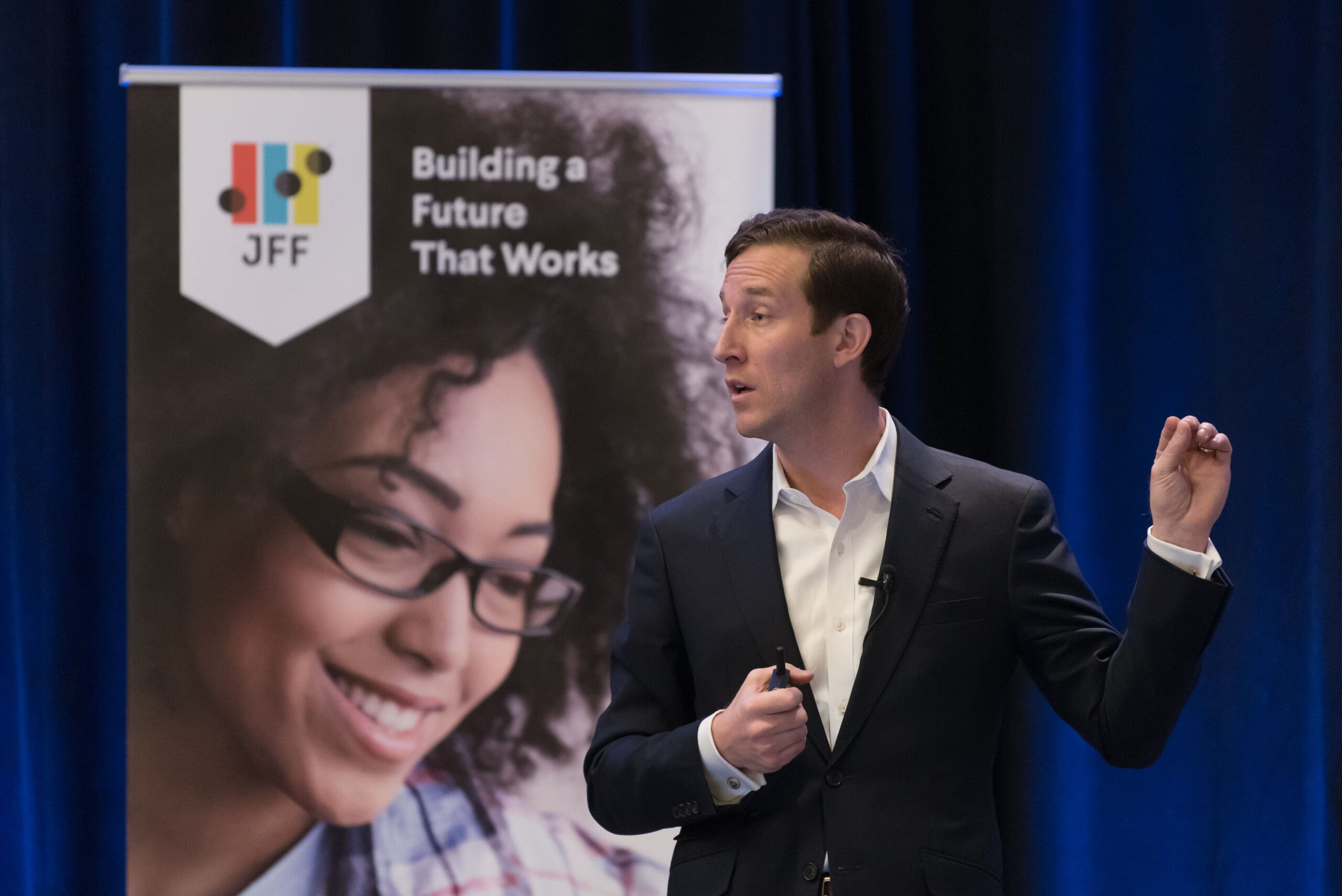
If you’ve seen Black Panther, it’s an African nation-state in which black people are the curators and the creators of science, engineering, technology, governance, policy, the use and distribution of equitable access to wealth. They held it for themselves because they’re afraid of what’s outside, but at the end of the movie, they share it with the world. It’s a what-if scenario, not what if we make it better for people who are disenfranchised, but what if we assume that people who are disenfranchised actually have the power and solutions we need to make the American dream grow for everyone. Community colleges, more than any institution in the United States, have the scale, the touch, the reach, to be the launchpad of that moonshot.
Networks like yours and other networks can hold the assets you need for this challenge. You all come with a common vision for equitable economic mobility, for using guided pathways to achieve completion. You all can achieve something more together than you can as individual colleges. You are evolving to address the imperative for institutional completion, to consider the impact of completion on economic equitable mobility, to impact education, work, and societal imperatives. You are evolving how we think about learning, and your innovations spur more learning, innovation, and scale.
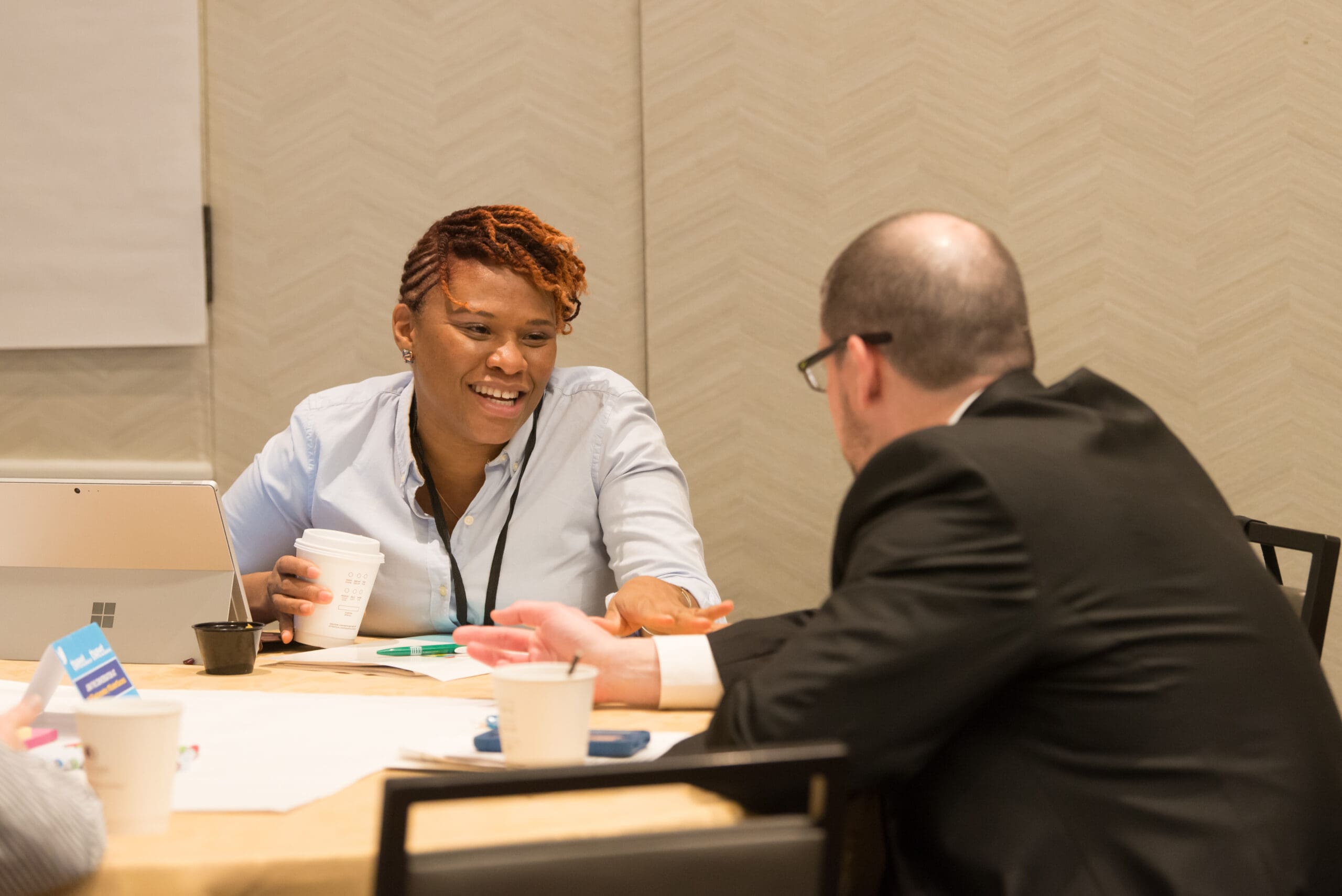
MaryOliver, an amazing poet who died recently, whispered in this poem: “Tell me,what is it you plan to do with your one wild and precious life?” I think morethan anybody knows, community colleges hold wild and precious lives in yourhands. You can make sure that when people come to you with a crazy hope and adream, that they actually can get there. You are the ones who will say to them,“This is the place where we will launch your wild and precious life.”

JFF Vice President Michael Collins shares his personal story to highlight how our Postsecondary State Network helps people at the bottom of the income ladder climb up.
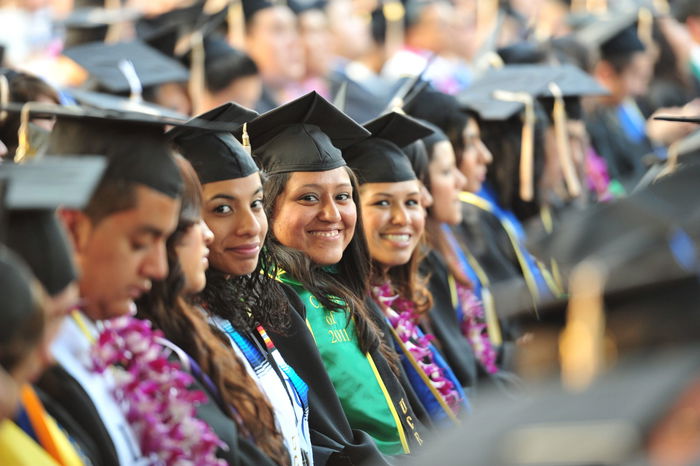
Our recommendations are framed in three strategies: Policy Agenda We created a comprehensive reforms agenda framed around three strategies for making postsecondary education work for students and the economy. Our goal is to guide policymakers…